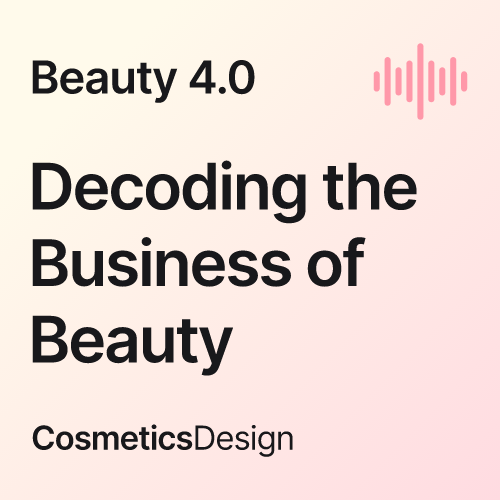‘Flywheel’ effect: Philips expects boom in at-home IPL hair removal systems in 2020 to lead to higher penetration in APAC
![Philips Electronics hopes boom in demand for at-home IPL hair removal systems in 2020 will lead to higher adoption rates across Asia-Pacific. [Philips Electronics]](/var/wrbm_gb_food_pharma/storage/images/_aliases/wrbm_large/publications/cosmetics/cosmeticsdesign-asia.com/headlines/market-trends/philips-expects-boom-in-at-home-ipl-hair-removal-systems-in-2020-to-lead-to-higher-penetration-in-apac/12138419-1-eng-GB/Philips-expects-boom-in-at-home-IPL-hair-removal-systems-in-2020-to-lead-to-higher-penetration-in-APAC.jpg)
Against the backdrop of the ongoing COVID-19 pandemic, the brand’s personal care category proved to perform well overall.
“We've seen obvious the trend that everyone has seen where consumers are cocooning more at home and therefore, especially during lockdown situations, don't have the opportunity to go out,” said Nicholas Lee, personal health leader, Philips ASEAN Pacific.
In 2020, the Amsterdam-headquartered company saw a huge surge in sales of its Intense Pulse Light (IPL) hair removal systems due to the pandemic.
“Typically, consumers would have gone to a salon to get their IPL or wax. But with circumstances like lockdowns, I think consumers have been exploring the different solutions that are available. That has been very pleasing for us,” said Lee.
Speaking to CosmeticsDesign-Asia at the inaugural Shopee Brand Summit, Lee said the impacts of COVID-19 has been pivotal to the adoption of at-home IPL hair removal systems.
“For IPL, there’s an initial threshold to go over – is it safe, is it going to work, is it better if someone else does it for me? There is a list of questions consumers have and COVID-19 acted like a springboard. People took a leap of faith and discovered that it works and has its advantages.”
One of the major advantages of an at-home IPL hair removal system is the cost, Lee highlighted.
“IPL hair removal treatment can be very costly at a salon. The upfront purchase of a high-quality IPL system might set you back $800 to $1000, but once you’ve paid that off in six to 12 months, you get to use it for the next four to five years – it’s a no brainer.”
Even with the accelerated adoption of at-home IPL hair removal systems, Lee believes the category still has plenty of room to grow in Asia.
“The penetration of IPL will explode in the coming years. I think we're still at a very low level of penetration. In particular in Asia, where going to the salon in a way is part of the beauty routine.”
Lee elaborated that he envisions the adoption of at-home IPL hair removal systems to build and in turn generate its own momentum.
“This becomes a flywheel. What we’re seeing is very much the typical innovation-adoption curve. People try it and hope it works, and when it does, they start to talk to friends and family, driving the penetration adoption of new tech.”
Nosey situation
The multinational has also seen interesting trends in the male grooming category. For instance, it has observed a dip in demand for shavers and an uptick in trimmers as men start to shave less and require at-home haircuts.
Interestingly, Lee revealed that nasal hair trimmers have been flying off the shelves, leading to global shortages.
He attributed this phenomenon to the increased adoption of video calls. “When you’re on a Teams or a Zoom call, often the person’s face is closer than it would be compared to a normal interaction. You notice, for example, things like nasal hair.”
Lee elaborated that the boom in nasal hair trimmers could be the result of the mirror effect.
“We talk about mirroring in advertising – you see someone you want to be; therefore, you adopt what they are wearing. In this case, you’re looking at some guy’s face, right up his nose. Then you question: what do I look like on the screen? Houston, I need to buy a nose trimmer.”
E-commerce and tech
Like other companies, Philips has seen an uptick in e-commerce sales. Moving forward, e-commerce will continue to be an integral channel for growth, especially for its emerging markets.
The company has seen a growing trend in markets like Indonesia and Vietnam due to the rapid expansion of the middle class and e-commerce.
“If we look at markets like Indonesia, e-commerce is the place where people seek out new innovations. If you are a young, urban, salaried person, we will target you through e-commerce,” said Lee.
The company is also looking into the adoption of augmented reality (AR) technology to drive sales online.
“We have looked a lot into the direction of AR in areas like shaving. We show what you would look like with a moustache, goatee or a hipster beard. We are going that direction with beauty as well to help women to imagine what their hair can look like before they purchase.”
![More than 60% of Japanese women would be willing to share their cosmetic products with men. [Getty Images]](/var/wrbm_gb_food_pharma/storage/images/_aliases/wrbm_medium/publications/cosmetics/cosmeticsdesign-asia.com/headlines/market-trends/new-japan-survey-reveals-potential-for-cosmetic-products-that-can-be-used-by-both-men-and-women/12541119-1-eng-GB/New-Japan-survey-reveals-potential-for-cosmetic-products-that-can-be-used-by-both-men-and-women.jpg)
![Health and beauty emerged as one of the top three categories on Shopee’s 4.4 Mega Shopping Day. [GettyImages]](/var/wrbm_gb_food_pharma/storage/images/_aliases/wrbm_medium/publications/cosmetics/cosmeticsdesign-asia.com/headlines/market-trends/shopee-4.4-facial-masks-and-premium-brands-dominates-platform-s-first-mega-festival-of-the-year/12380241-1-eng-GB/Shopee-4.4-Facial-masks-and-premium-brands-dominates-platform-s-first-mega-festival-of-the-year.jpg)
![Tthe upcoming shifts, challenges and game-changing tech that will influence the digital beauty space. [Getty Images]](/var/wrbm_gb_food_pharma/storage/images/_aliases/wrbm_medium/publications/cosmetics/cosmeticsdesign-asia.com/headlines/market-trends/watch-how-the-great-online-shift-of-2020-is-impacting-the-apac-beauty-industry/12280525-1-eng-GB/WATCH-How-the-great-online-shift-of-2020-is-impacting-the-APAC-beauty-industry.jpg)
![Organic Bioactives is focusing on expanding its reach in Asia. [GettyImages]](/var/wrbm_gb_food_pharma/storage/images/_aliases/wrbm_medium/publications/cosmetics/cosmeticsdesign-asia.com/article/2021/03/01/organic-bioactives-aiming-to-grow-exposure-in-asia-after-bagging-top-l-oreal-innovation-prize/12216862-1-eng-GB/Organic-Bioactives-aiming-to-grow-exposure-in-Asia-after-bagging-top-L-Oreal-innovation-prize.jpg)





![Indus Valley is working to corner 30% of India's online premium boxed hair colour market. [Indus Valley]](/var/wrbm_gb_food_pharma/storage/images/_aliases/wrbm_tiny/publications/cosmetics/cosmeticsdesign-asia.com/article/2024/07/26/indus-valley-aims-to-secure-30-of-india-s-online-premium-hair-colour-market-with-organic-offerings/17594932-5-eng-GB/Indus-Valley-aims-to-secure-30-of-India-s-online-premium-hair-colour-market-with-organic-offerings.jpg)
![[Getty Images]](/var/wrbm_gb_food_pharma/storage/images/_aliases/wrbm_tiny/publications/cosmetics/cosmeticsdesign-asia.com/china/china-focus-latest-developments-in-china-s-booming-beauty-market25/17606695-1-eng-GB/China-focus-Latest-developments-in-China-s-booming-beauty-market.jpg)
![Kosé has launched makeup brand Visée in Singapore as part of plans to reinforce its position in SEA. [Visée]](/var/wrbm_gb_food_pharma/storage/images/_aliases/wrbm_tiny/publications/cosmetics/cosmeticsdesign-asia.com/headlines/business-financial/visee-singapore-kose-aims-to-enhance-brand-visibility-in-sea-with-new-launch/17587264-1-eng-GB/Visee-Singapore-Kose-aims-to-enhance-brand-visibility-in-SEA-with-new-launch.jpg)
![ble C&C is set on reinforcing its competitiveness in China’s beauty market. [Missha]](/var/wrbm_gb_food_pharma/storage/images/_aliases/wrbm_tiny/publications/cosmetics/cosmeticsdesign-asia.com/headlines/business-financial/able-c-c-aims-to-strengthen-competitiveness-in-china-through-online-expansion-kol-collabs/17591626-1-eng-GB/Able-C-C-aims-to-strengthen-competitiveness-in-China-through-online-expansion-KOL-collabs.jpg)

![LG H&H genetic study says 23 genetic regions affect natural skin tone. [Getty Images]](/var/wrbm_gb_food_pharma/storage/images/_aliases/wrbm_tiny/publications/cosmetics/cosmeticsdesign-asia.com/article/2024/07/23/lg-h-h-discovery-of-genetic-skin-tone-factors-in-east-asians-potentially-key-to-skin-radiance-developments/17587210-1-eng-GB/LG-H-H-discovery-of-genetic-skin-tone-factors-in-East-Asians-potentially-key-to-skin-radiance-developments.jpg)

![DR.CI:LABO expects brand-supplier partnerships gain more public prominence as consumers interest in skin care grows online. [Dr.Ci:Labo]](/var/wrbm_gb_food_pharma/storage/images/_aliases/wrbm_tiny/publications/cosmetics/cosmeticsdesign-asia.com/article/2024/07/22/brand-supplier-partnerships-will-come-to-the-fore-amid-the-online-skin-care-landscape-dr.ci-labo/17576755-1-eng-GB/Brand-supplier-partnerships-will-come-to-the-fore-amid-the-online-skin-care-landscape-DR.CI-LABO.png)


